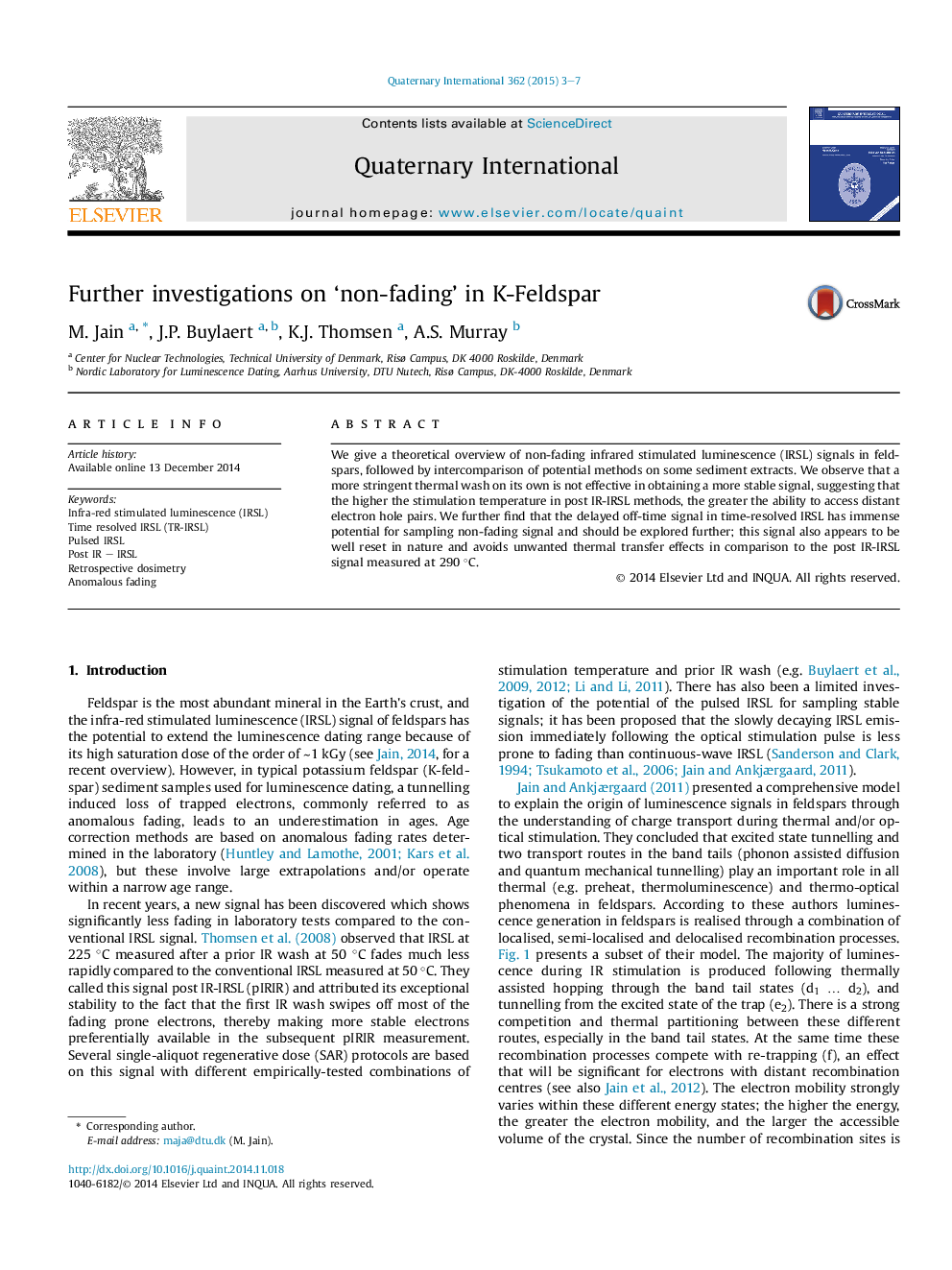| Article ID | Journal | Published Year | Pages | File Type |
|---|---|---|---|---|
| 1040834 | Quaternary International | 2015 | 5 Pages |
Abstract
We give a theoretical overview of non-fading infrared stimulated luminescence (IRSL) signals in feldspars, followed by intercomparison of potential methods on some sediment extracts. We observe that a more stringent thermal wash on its own is not effective in obtaining a more stable signal, suggesting that the higher the stimulation temperature in post IR-IRSL methods, the greater the ability to access distant electron hole pairs. We further find that the delayed off-time signal in time-resolved IRSL has immense potential for sampling non-fading signal and should be explored further; this signal also appears to be well reset in nature and avoids unwanted thermal transfer effects in comparison to the post IR-IRSL signal measured at 290 °C.
Related Topics
Physical Sciences and Engineering
Earth and Planetary Sciences
Geology
Authors
M. Jain, J.P. Buylaert, K.J. Thomsen, A.S. Murray,
